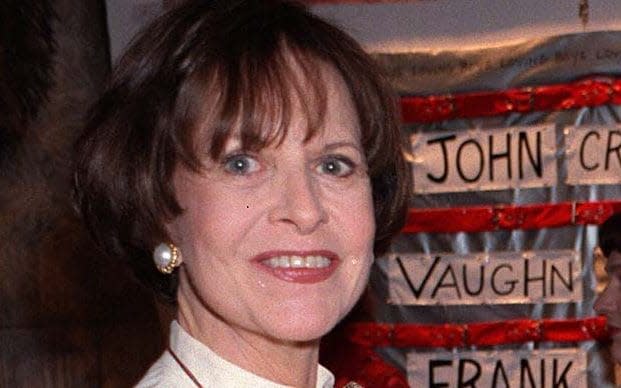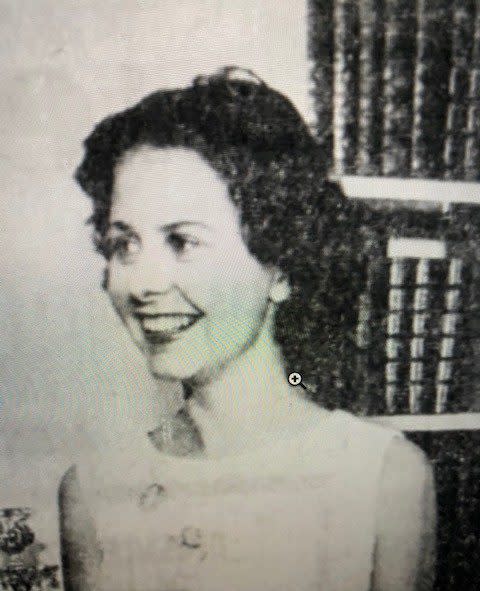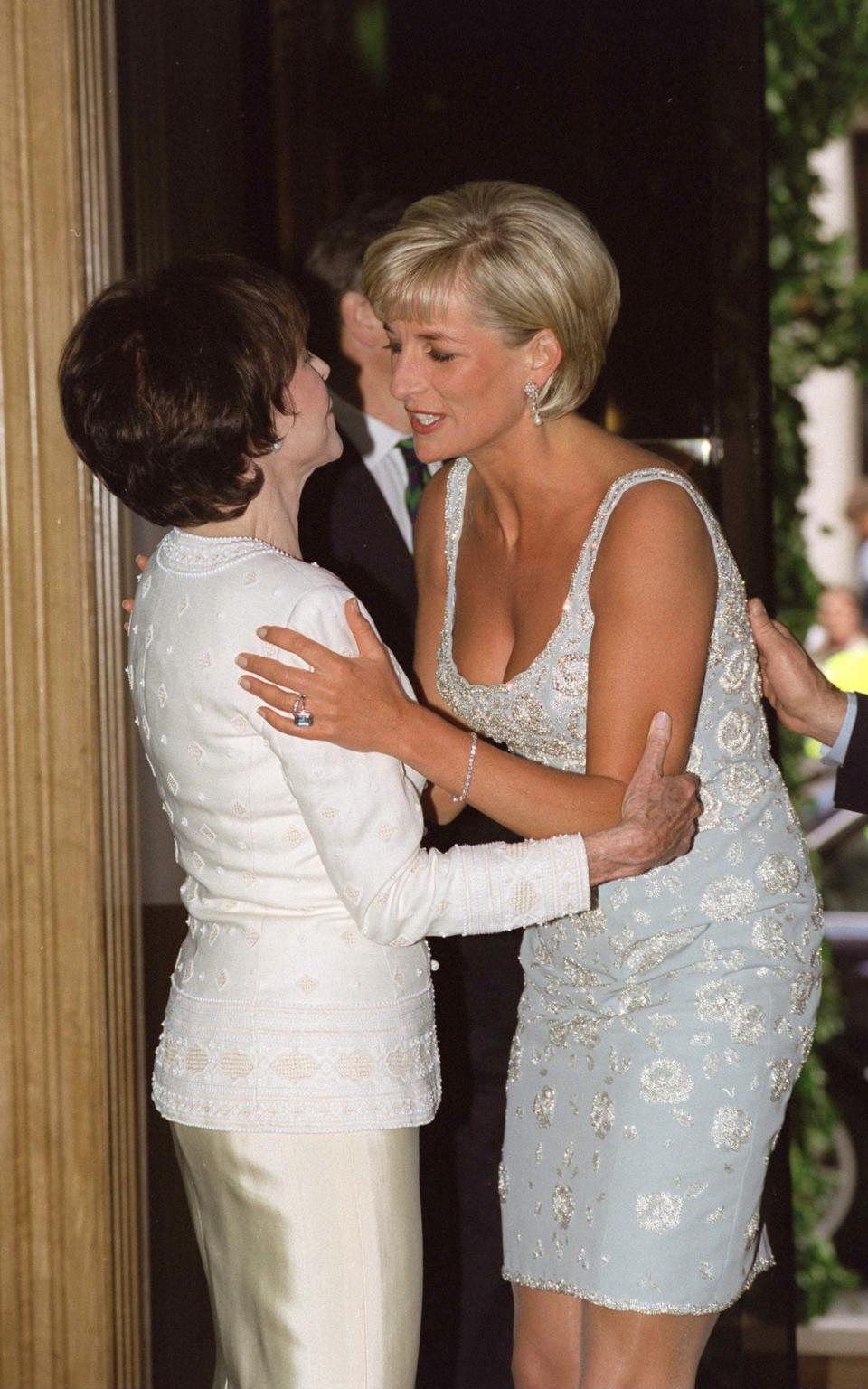Marguerite Littman, socialite, Aids campaigner and accent coach to the stars – obituary

Marguerite Littman, who has died aged 90, was an American-born socialite said to have been the model for Truman Capote’s Southern heroine Holly Golightly. Born in Monroe, Louisiana – she was described as a “Louisianadorable” and “a languorous beauty with magnolia-white-skin and big brown eyes” – she proved a hit in Hollywood with her exaggerated Southern drawl, and coached many famous actors and actresses, notably Elizabeth Taylor for the film Cat on a Hot Tin Roof. Years later, in London, she founded the Aids Crisis Trust, winning the friendship and support of Diana, Princess of Wales.
Marguerite Littman lived for more than 50 years in London, where she was married to the QC Mark Littman. But she described herself as a “zigzag” socialite, and for decades society magazines on both sides of the Atlantic regaled their readers with breathless accounts of her “popping over” with suitcases stuffed with designer clothes (she was more or less a permanent feature on the world’s best-dressed list) for “whirlwinds” of cocktail parties, dinner parties in “gorgeous” homes and “glittering charity fundraisers”. “It’s a hard life but somebody has to do it,” one scribe remarked.
Her friend Brooke Hayward once described Marguerite Littman as “a person who collects people”. “In New York, name ’em,” said the designer Bill Blass, another great friend. “They all know Marguerite.’’ The New York Times once noted that when any of her friends recalled where they first met her, “they invariably mention someone famous, or at least exotic”.
She herself told the story of a trip to the Hotel Cipriani in Venice with Tennessee Williams in the 1970s: “We were sitting by the pool, watching this skinny girl doing her lengths, when Tennessee says, ‘She’s a freak.’ To which I replied, ‘No, anorexia nervosa’. And he said, ‘God, you know everybody.’ ”

Yet Marguerite Littman’s Southern charm concealed a much tougher side, which she displayed in the early 1960s when she accompanied the photographer Richard Avedon on a trip to her native Louisiana to document segregation, for a book he was doing with James Baldwin.
“I didn’t tell anyone in New Orleans what we were doing because I didn’t think they would approve,” she recalled. That the book, Nothing Personal (1964), remains a classic document of the era, The New York Times observed in 1999, “is due in large part to Mrs Littman’s persuasive charm, but also to her finely attuned social antennae.”
In 1986, following the death from Aids of her friend Rock Hudson, determined to galvanise support for HIV programmes from the British establishment, she sent 300 handwritten letters to prominent people asking them for £100 each to be founding members of the Aids Crisis Trust.
No one said no, and, six months later, she officially launched the trust with a gala auction of items donated by friends at Christie’s, attended by everyone from Bianca Jagger and the Duchess of York to Boy George, who outbid the Duchess for an evening hat.

Among the new charity’s trustees and council members were the Queen’s cousin, John Bowes Lyon, Doris Saatchi, Lord Boyd of Merton, Lord Goodman and the Earl of Gowrie. The founders’ committee included (according to Newsday magazine) “three princesses, seven counts and countesses, seven Rothschilds, a half-dozen barons, another half-dozen viscounts and more than three dozen assorted lords and ladies plus another three dozen Honourable this and Honourable that”.
To encourage London-based American corporations to give, she founded an American Friends committee with Bill Blass, Nancy Kissinger and others. She was brilliant at recruiting sponsors. For a gala showing of The Remains of the Day she persuaded the Caviar House to provide caviar for the dinner afterwards at Thomas Goode. There was so much caviar it was served twice.
At the 1986 Christie’s gala auction she persuaded Lord Snowdon and David Bailey to establish “studios” where guests could be photographed – at reasonable prices.
Marguerite Littman’s trust quickly became Britain’s most visible Aids charity, raising millions of pounds. Her secret, almost unique to charity organisers, was that she made her events enormous fun. Its public profile was greatly boosted by the active support of the Princess of Wales, who hosted fundraising galas.
The two women became friends, though Marguerite Littman described their relationship as “more playmates than intimates”. She recalled how they collaborated on a running list of people who they felt brought “oxygen into a room”.

When Bill Blass was due for lunch at Kensington Palace, Marguerite Littman recalled, the Princess inquired about his oxygen level. “Oh, God,’’ Marguerite replied. “Dizzy!”
One morning in July 1996 Marguerite Littman received a call from the Princess: “She said: ‘I have a wonderful idea. I’m going to give you all of my dresses.’ I didn’t know quite what that meant. I thought, Oh, God, do I dress that badly?’’
The result was the famous charity auction of the Princess’s wardrobe at Christie’s, New York in June 1997, a month before her death in Paris, which raised $3.25 million, with half of the proceeds going to the Aids Crisis Trust.
She was born Marguerite Lamkin on May 4 1930 at Monroe, Louisiana, to Ebenezer (Ebb) Tyler Lamkin II, a prominent lawyer, and his wife, Layton Speed. The Lamkins were one of Monroe’s oldest families, landowners for many generations. They descended from the daughters of the American Revolution and General Robert E Lee.
Marguerite had one sibling, an older brother, the novelist and playwright (Hillyer) Speed Lamkin (1927-2011). She was educated at Neville High School and Tulane University, Louisiana, was a graduate of Finch Junior College in New York, and a member of the Kappa Theta Alpha sorority.
In 1952 she married Harvard-educated Harry McNab Brown (1917-86), who became a sub-editor on The New Yorker. He was primarily interested in hunting, fishing, guns and avoiding work.
He was prone to drinking binges, and the marriage ended melodramatically in 1955. When she went to their house to pack her clothes he pulled a gun on her, but fortunately her brother Speed appeared, after which she fled home to Louisiana. (Later his 1944 novel, A Walk in the Sun, was made into a film, and he shared an Oscar for the screenplay of A Place in the Sun (1951).)
During her marriage, Marguerite Littman had gone to visit her brother in Hollywood, at a time when he was under contract to the producer Jerry Wald. “Jerry wanted to put me under contract at Columbia,’’ she recalled. “He said I looked like a young Susan Hayward. He sent me to a voice coach called Lester Luther to get rid of my accent.’’

But Luther’s efforts were in vain. While in Hollywood, Speed took her to a cocktail party that Christopher Isherwood was giving for Anna Magnani. There she met Tennessee Williams and Elia Kazan, who was “open-mouthed at her mint julep-and-plantation voice”, and hired her as an accent coach.
In April 1955 she coached Barbara Bel Geddes in the Mississippi accent for the Broadway production of Cat on a Hot Tin Roof. She even wrote the lyrics for a song in the play. She asked for no salary, only expenses, but lived at the St Regis Hotel and so cost them more than Barbara’s salary. The same year she tried to teach Dana Wynter for the film The View from Pompey’s Head but found she had no ear.
She taught Margaret Leighton for The Sound and Fury (1959), Laurence Harvey for Summer and Smoke (1961), and Elizabeth Taylor for Cat on a Hot Tin Roof in 1958.
In 1962 she was quoted by John Crosby saying: “Elizabeth Taylor was the bai-yest pupil ah’ve had. She has a marvellous ee-yah. As a result of all this teachin’, ah’ve got terribly South’n mahself. Ah’ve had to quit because ah was gettin’ to be a parody on mahself.”

Instead she took to writing books, having her hair done every day, and writing under the dryer, enjoying the coffee at the Carlyle Hotel. Her book, illustrated by Tony Walton (husband of Julie Andrews), divided people into cat people or dog people. She thought the ideal marriage was between a cat woman and a dog man. She was a cat person herself, so too Elizabeth Taylor and the Duchess of Windsor. Richard Nixon was a dog.
She gave up holding a literary salon, because writers do not like meeting other writers. She used to entertain Carson McCullers, Gore Vidal, William Faulkner, Christopher Isherwood, Elia Kazan and Tennessee Williams.
At one time she found herself more or less mothering the actor, Montgomery Clift. The crew on the set had codes for his drinking ranging from Georgia and Florida to Zanzibar (the worst).
In 1958 her father attempted suicide, prompting Marguerite to complain that they would never get the blood out of the carpet.
After a hectic love life, in the midst of which one of her beaux fell in love with her brother, in 1959 she married Rory Harrity (1933-74), a young actor who was playing in Gore Vidal’s Visit to a Small Planet in New York. By 1960, according to Isherwood, she was denouncing him as “a fat drunken faggot” and accusing him of infidelity and drunkenness. They divorced in 1963.
The rest of the time she socialised. “She just knew everybody,’’ recalled the writer Dominick Dunne, who met her while she was living in the studio of the set designer Tony Duquette. In New York she joined Glamour magazine as an agony aunt called “Daisy”. She and Ethel Scull gave an exclusive party in 1964, launching Andy Warhol’s Pop and Elvis phase.

In 1965 she married the British barrister Mark Littman, whom she had met in Manhattan two years earlier. He was placid and intelligent and must have been a port in the storm after the earlier turbulent marriages. They moved to London, where they dispensed lavish hospitality in a house in Brompton Square, soon followed by a mansion in Chester Square, Marguerite becoming famous for her Bloody Marys.
Meanwhile, after 11 years she and her trustees decided to dissolve the Aids Crisis Trust, feeling they had accomplished their goal of getting Britain’s establishment involved with the cause, and they were duplicating the efforts of the more recently founded Elton John Aids Foundation, on whose board she served.
The American Aids research pioneer William Haseltine detected a “magical quality” in Marguerite Littman. “Part of it is her Southern accent and part of it is her fey mannerism,” he explained. “It’s removed but engaged at the same time. You might even say she’s what Holly Golightly would have been if she had grown up.’’
She told an interviewer: “I feel I’ve lived a hundred lives. Do you ever have that feeling?”
Her husband died in 2015. There were no children of the marriage.
Marguerite Littman, born May 4 1930, died October 16 2020

